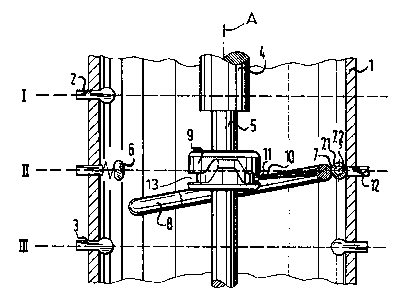Some of the information on this Web page has been provided by external sources. The Government of Canada is not responsible for the accuracy, reliability or currency of the information supplied by external sources. Users wishing to rely upon this information should consult directly with the source of the information. Content provided by external sources is not subject to official languages, privacy and accessibility requirements.
Any discrepancies in the text and image of the Claims and Abstract are due to differing posting times. Text of the Claims and Abstract are posted:
| (12) Patent: | (11) CA 2085029 |
|---|---|
| (54) English Title: | POLARITY SWITCH FOR STEP-TRANSFORMER SELECTOR |
| (54) French Title: | INVERSEUR DE POLARITE POUR SELECTEUR DE TRANSFORMATEUR A GRADINS |
| Status: | Expired and beyond the Period of Reversal |
| (51) International Patent Classification (IPC): |
|
|---|---|
| (72) Inventors : |
|
| (73) Owners : |
|
| (71) Applicants : |
|
| (74) Agent: | NORTON ROSE FULBRIGHT CANADA LLP/S.E.N.C.R.L., S.R.L. |
| (74) Associate agent: | |
| (45) Issued: | 2002-10-29 |
| (22) Filed Date: | 1992-12-10 |
| (41) Open to Public Inspection: | 1993-06-14 |
| Examination requested: | 1999-01-19 |
| Availability of licence: | N/A |
| Dedicated to the Public: | N/A |
| (25) Language of filing: | English |
| Patent Cooperation Treaty (PCT): | No |
|---|
| (30) Application Priority Data: | ||||||
|---|---|---|---|---|---|---|
|
A step-transformer selector has a generally cylindrical drum
centered on an axis and provided with an annular array of selector
contacts and, axially offset therefrom, with at least one polarity
contact offset axially from the selector contacts. A selector shaft
extends along the axis in the drum and rotatable about the axis to
connect to selected ones of the selector contacts. A polarity switch
having a pivot in the drum offset from the axis and a rang can rock in
the drum on the pivot between a connecting position touching and con-
necting to the polarity contact and an out-of-service position offset
from and out of contact with the polarity contact. A cam on the shaft
engages a follower on the ring for rocking the ring from its out-of-
service position into its connecting position at least once during
each rotation of the shaft about the axis.
Note: Claims are shown in the official language in which they were submitted.
Note: Descriptions are shown in the official language in which they were submitted.

2024-08-01:As part of the Next Generation Patents (NGP) transition, the Canadian Patents Database (CPD) now contains a more detailed Event History, which replicates the Event Log of our new back-office solution.
Please note that "Inactive:" events refers to events no longer in use in our new back-office solution.
For a clearer understanding of the status of the application/patent presented on this page, the site Disclaimer , as well as the definitions for Patent , Event History , Maintenance Fee and Payment History should be consulted.
| Description | Date |
|---|---|
| Time Limit for Reversal Expired | 2008-12-10 |
| Letter Sent | 2007-12-10 |
| Inactive: IPC from MCD | 2006-03-11 |
| Grant by Issuance | 2002-10-29 |
| Inactive: Cover page published | 2002-10-28 |
| Inactive: Final fee received | 2002-08-15 |
| Pre-grant | 2002-08-15 |
| Notice of Allowance is Issued | 2002-02-26 |
| Notice of Allowance is Issued | 2002-02-26 |
| Letter Sent | 2002-02-26 |
| Inactive: Approved for allowance (AFA) | 2002-02-15 |
| Amendment Received - Voluntary Amendment | 2002-01-18 |
| Inactive: S.30(2) Rules - Examiner requisition | 2001-09-26 |
| Inactive: Application prosecuted on TS as of Log entry date | 1999-02-03 |
| Letter Sent | 1999-02-03 |
| Inactive: Status info is complete as of Log entry date | 1999-02-03 |
| Request for Examination Requirements Determined Compliant | 1999-01-19 |
| All Requirements for Examination Determined Compliant | 1999-01-19 |
| Application Published (Open to Public Inspection) | 1993-06-14 |
There is no abandonment history.
The last payment was received on 2002-10-11
Note : If the full payment has not been received on or before the date indicated, a further fee may be required which may be one of the following
Please refer to the CIPO Patent Fees web page to see all current fee amounts.
| Fee Type | Anniversary Year | Due Date | Paid Date |
|---|---|---|---|
| MF (application, 5th anniv.) - standard | 05 | 1997-12-10 | 1997-08-19 |
| MF (application, 6th anniv.) - standard | 06 | 1998-12-10 | 1998-08-03 |
| Request for examination - standard | 1999-01-19 | ||
| MF (application, 7th anniv.) - standard | 07 | 1999-12-10 | 1999-09-08 |
| MF (application, 8th anniv.) - standard | 08 | 2000-12-11 | 2000-11-29 |
| MF (application, 9th anniv.) - standard | 09 | 2001-12-10 | 2001-07-03 |
| Final fee - standard | 2002-08-15 | ||
| MF (application, 10th anniv.) - standard | 10 | 2002-12-10 | 2002-10-11 |
| MF (patent, 11th anniv.) - standard | 2003-12-10 | 2003-10-22 | |
| MF (patent, 12th anniv.) - standard | 2004-12-10 | 2004-08-11 | |
| MF (patent, 13th anniv.) - standard | 2005-12-12 | 2005-09-16 | |
| MF (patent, 14th anniv.) - standard | 2006-12-11 | 2006-09-22 |
Note: Records showing the ownership history in alphabetical order.
| Current Owners on Record |
|---|
| MASCHINENFABRIK REINHAUSEN GMBH |
| Past Owners on Record |
|---|
| HEINRICH FREYMULLER |